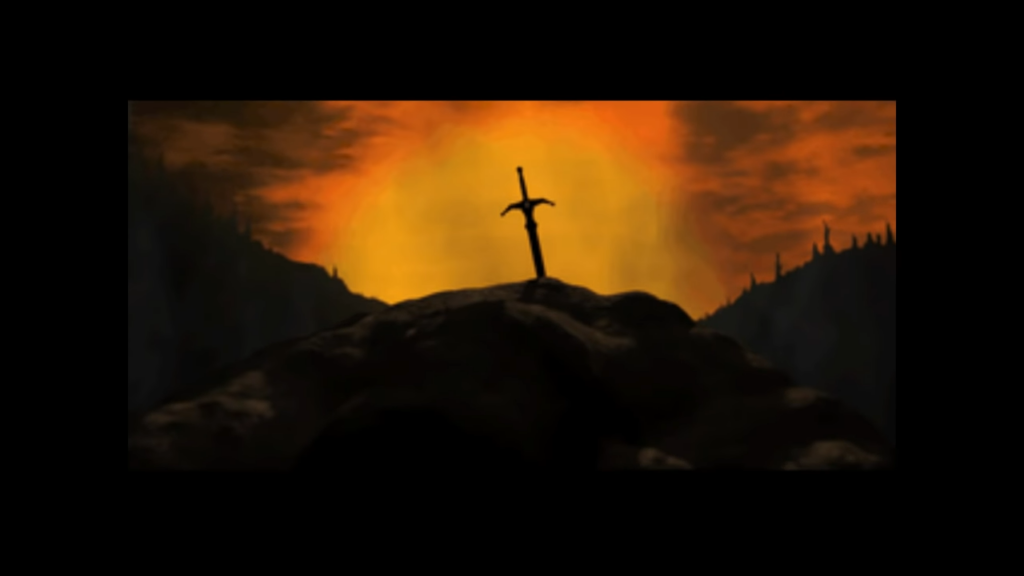The 1990s marked a pivotal period in the history of video games, characterized by a surge in technological advancements, innovative gameplay mechanics, and the birth of iconic franchises. This list delves into the top ten video games that defined the gaming landscape during this transformative decade. From the nostalgic allure of vintage 2D favorites to the revolutionary leap into 3D landscapes, these games captivated audiences and etched unforgettable memories in the gaming community’s collective heart. As we explore these titles, we celebrate the nostalgia of a decade that laid the foundation for the modern gaming industry and its continued evolution.
Super Mario 64 (1996)

Nintendo’s Super Mario 64 not only revolutionized the platforming genre but also set the standard for 3D gaming. Mario’s transition into the three-dimensional realm was a monumental leap, introducing players to an expansive, open-world environment filled with imaginative landscapes and inventive challenges. The game’s innovative use of camera controls, coupled with Mario’s acrobatic moves, laid the foundation for future 3D platformers. Super Mario 64’s enduring influence is evident in the countless 3D adventures that followed, carrying on its legacy of innovation and joyful exploration.
The Legend Of Zelda: Ocarina Of Time (1998)

Another Nintendo masterpiece, The Legend of Zelda: Ocarina of Time, elevated the action-adventure genre to new heights. With its sprawling open-world design, time-travel mechanics, and a captivating narrative, Ocarina of Time became a defining title for the Nintendo 64 console. Link’s journey to save Hyrule, accompanied by the haunting melodies of the ocarina, remains a timeless and cherished gaming experience. The game’s lasting impact stands as proof of its pivotal role in shaping the future of storytelling and open-world exploration within the realm of video games.
Final Fantasy VII (1997)

Square Enix’s Final Fantasy VII is hailed as a landmark title that popularized Japanese role-playing games (JRPGs) worldwide. The game’s cinematic storytelling, complex characters, and immersive world-building set a new standard for narrative-driven gaming. With its emotional depth, unforgettable antagonist Sephiroth, and groundbreaking use of 3D graphics, Final Fantasy VII remains a cultural touchstone in the RPG genre. The impact of Final Fantasy VII extends beyond its initial release, influencing the storytelling and character development in RPGs for years to come.
GoldenEye 007 (1997)

Rare’s GoldenEye 007 for the Nintendo 64 brought the world of James Bond to the gaming realm in spectacular fashion. This first-person shooter not only delivered an engaging single-player experience but also introduced split-screen multiplayer, revolutionizing multiplayer gaming on consoles. GoldenEye 007’s impact on the FPS genre and multiplayer dynamics is still evident in the gaming landscape today. The game’s enduring popularity paved the way for the widespread adoption of multiplayer modes, becoming a blueprint for cooperative and competitive gameplay in first-person shooters.
Metal Gear Solid (1998)

Hideo Kojima’s Metal Gear Solid for the PlayStation redefined the stealth-action genre with its cinematic storytelling and innovative gameplay mechanics. Players assumed the role of Solid Snake, navigating complex environments and engaging in intense, tactical encounters. Metal Gear Solid’s intricate plot, memorable characters, and genre-defying narrative made it a trailblazer in the art of interactive storytelling. The game’s influence can be seen in the emphasis on narrative and character-driven experiences within the modern gaming landscape.
Diablo (1996)

Blizzard Entertainment’s Diablo emerged as a pioneer in the action RPG genre, introducing players to the dark and atmospheric world of Sanctuary. With its randomized dungeons, compelling loot system, and cooperative multiplayer gameplay, Diablo set the stage for the dungeon-crawling experiences that would follow. The game’s addictive blend of exploration, character customization, and multiplayer interactions left an enduring impact on the gaming community. Diablo’s legacy is evident in the continued popularity of the action RPG genre and the influence it has had on subsequent titles.
Street Fighter II (1991)

Capcom’s Street Fighter II is a cornerstone in the fighting game genre, shaping the competitive landscape of arcade gaming. The game introduced iconic characters like Ryu and Chun-Li, each with unique fighting styles and special moves. Street Fighter II’s strategic depth, precise controls, and competitive multiplayer dynamics laid the groundwork for the esports phenomenon that would later emerge. The game’s enduring legacy is celebrated in the continued success of the Street Fighter franchise and its influence on competitive fighting games.
Quake (1996)

Id Software’s Quake was a watershed moment for the first-person shooter genre, showcasing the potential of 3D graphics and online multiplayer. With its groundbreaking 3D engine, Quake delivered fast-paced, visceral gameplay that captivated players. The inclusion of online multiplayer, coupled with the modding community’s contributions, solidified Quake as a foundational title in the evolution of multiplayer shooters. Quake’s impact is felt in the continued popularity of online multiplayer gaming and the modding communities that enhance and extend the life of many contemporary games.
Sonic The Hedgehog (1991)

Sega’s Sonic the Hedgehog burst onto the scene as a charismatic and speedy alternative to Nintendo’s Mario. With its vibrant graphics, catchy soundtrack, and high-speed platforming, Sonic became the mascot for Sega’s Genesis console. The game’s success propelled Sonic into pop culture icon status, setting the stage for a lasting rivalry between Sega and Nintendo during the ’90s. Sonic’s enduring popularity is a testament to the character’s cultural significance and the impact of the Sonic franchise on the gaming industry.
Half-Life (1998)

Valve Corporation’s Half-Life redefined the narrative possibilities within first-person shooters. The game’s immersive storytelling, scripted sequences, and emphasis on environmental storytelling marked a departure from traditional FPS conventions. Half-Life’s innovative approach to narrative and level design influenced the future of single-player gaming, inspiring a generation of developers to prioritize storytelling in the FPS genre. The game’s legacy is seen in the continued evolution of narrative-driven FPS titles and the critical acclaim garnered by those that aim to deliver compelling stories alongside engaging gameplay.
For further information on 90s nostalgia, reference the following links:


